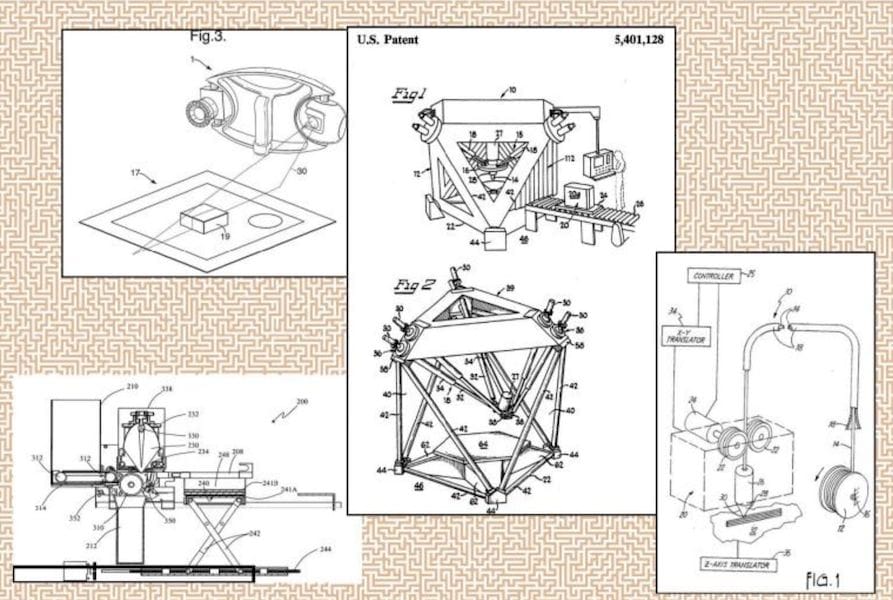
This week’s selection is the instructive “3D Printer: Patents & Innovations” by M. A. Buth.
Patents have given shape to today’s advanced world of 3D printing through their effects on industry over the past several decades. They’re not something you can “see” in a machine, nor are they particularly visible anywhere else, but their effect is quite profound.
3D printing as a technology began in the early 1980’s with the invention of FDM and SLA processes by two independent inventors, both of whom patented their processes. These patents led directly to the creation of 3D Systems and Stratasys, who largely dominated the industry until recent years.
Why were they able to do so? Because the patents protected their innovation and they were allowed to harvest some profits under its umbrella. However, those patents eventually expired after the normal period, and that opened up the field to many more competitors who could then use the same process. The entire field of desktop 3D printers emerged as a singular result of the expiry of the FDM patent.
Patents are very, very important.
And this book by M. A. Buth explains quite a bit about them.
The book opens with a clear explanation of the differences between commonly misunderstood legal terms, and in particular the definition of a patent. The benefits of patents are discussed.
Buth reviews several controversial patent cases, in which one of the patent holders has made legal claims against another party who they believe have been using their patented processes. These particular challenges are now largely completed, as this book was written in 2014, but it is fascinating to see how they progressed, and how a company goes about enforcing their patent against those who attempt to duplicate the technology.
Buth then proceeds to examine a number of patents that had been issued but yet to see the light of day in the commercial marketplace. Patents examined include some unusual ideas, including:
- Support structure with recycled resin
- Multiextruder with only one drive
- Smoothing methods
- Volumetric feed control
- Auto tip calibration
- 3D printing under water
- And more…
Whether any of these ideas have actually made it into a machine by now is not known, but it is fascinating to imagine the possibilities.
And that is why I think this is a useful book. While it is relatively old, its concepts regarding patents, their use and protection are still quite valid.
The idea of examining patents in order to predict future product developments is always valid, and it’s something we do periodically. However, sometimes the patent descriptions are so obscure it is challenging to understand exactly what is being proposed. I sometimes feel this is done purposely to obfuscate the idea to deter competitors.
But nevertheless, a good understanding of patents and how they change the industry is very important.
Via Amazon

